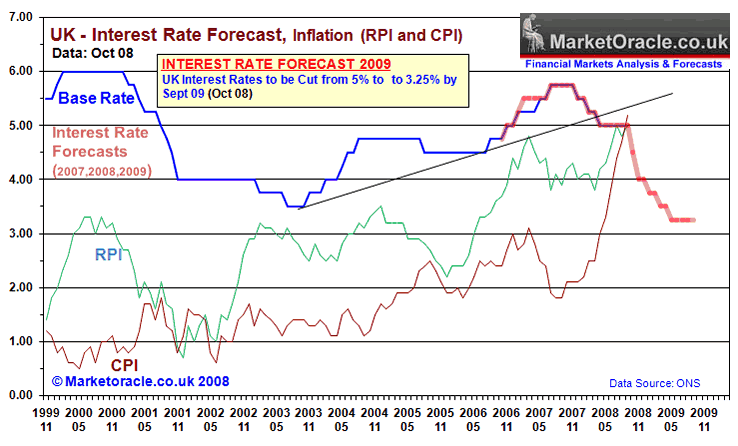Interest Rate Forecasting Economic Indicators
Post on: 16 Март, 2015 No Comment

Interest Rate Forecasting: Economic Indicators
Interest rates on residential mortgages and U.S. Treasury securities can be influenced by monthly changes and the longer-term trend changes of economic indicators. There are many variables that can influence the rates on long-term debt instruments, but an understanding of key economic indicators can provide clues to the future direction of interest rates.
In most cases, economic reports are released on a monthly basis.
Gross Domestic Product
The gross domestic product (GDP) — the output of goods and services produced by labor and property located in the United States — is the most important economic indicator published.
A larger-than-expected quarterly increase or increasing trend is considered inflationary, causing concern the Fed might need to intervene and raise interest rates in order to slow growth. Conversely, a negative growth, or economic downturn may cause the Fed to lower interest rates to stimulate the economy and increase the growth rate.
Current News Release: Gross Domestic Product — Bureau of Economic Analysis (BEA)
Consumer Price Index
The Consumer Price Index (CPI) is a measure of the average change over time in the prices paid by urban consumers for a fixed market basket of consumer goods and services. The CPI is considered the most important measure of inflation.
The CPI for All Items less Food and Energy (also sometimes referred to as the core or underlying CPI) excludes volatile food and energy prices. Analysts focus on the core CPI, which is considered a more accurate measure of the underlying rate of inflation.
A higher-than-expected CPI or increasing trend is considered inflationary, and can cause bond prices to fall and yields and interest rates to rise. Likewise, a lower-than-expected CPI cause yields and interest rates to fall.
Current News Release: Consumer Price Index — Bureau of Labor Statistics (BLS)
Producer Price Index
The Producer Price Index (PPI) is a family of indexes that measures the average change over time in the selling prices received by domestic producers of goods and services. PPI’s measure price change from the perspective of the seller. This contrasts with other measures, such as the Consumer Price Index (CPI), that measure price change from the purchaser’s perspective. The PPI can be volatile. It is best to use the six-month to one-year moving average.
A higher-than-expected PPI is considered inflationary, and can cause bond prices to fall and yields and interest rates to rise. Likewise, a lower-than-expected figure cause yields and interest rates to fall.
Current News Release: Producer Price Index — Bureau of Labor Statistics (BLS)
Historical graph for the Producer Price Index, 1989 to present is available.
Employment Situation: Payroll Employment
The government’s employment report provides employment, hours and earnings estimates based on payroll records of business establishments. The payroll employment is the most significant indicator of current economic trends each month, together with the unemployment rate. Economists use payroll employment data to predict other economic indicators (the Personal Income, Industrial Production, and Index of Leading Economic Indicators).
A higher-than-expected monthly increase or increasing trend is considered inflationary, and can cause bond prices to fall and yields and interest rates to rise. Conversely, a smaller-than-expected figure cause yields and interest rates to fall.
Current News Release: Employment Situation — Bureau of Labor Statistics (BLS)
Employment Situation: Unemployment Rate
The government’s employment report provides information on the unemployment rate and the number of unemployed persons by occupation, industry, duration of unemployment, and reason for unemployment. Unlike the payroll employment data, which is a coincident indicator of economic activity (it changes direction at the same time as the economy), the unemployment rate is a lagging indicator.
A lower-than-expected unemployment rate or declining trend is considered inflationary, and can cause bond prices to fall and yields and interest rates to rise.
Current News Release: Employment Situation — Bureau of Labor Statistics (BLS)
Consumer Credit
Consumer credit data tracks debt levels for auto financing and commercial banking credit and are considered a fairly good indicator of consumer spending. Consumer credit report is generally considered to have little impact on interest rates.
Current News Release: Consumer Credit — Federal Reserve Board














